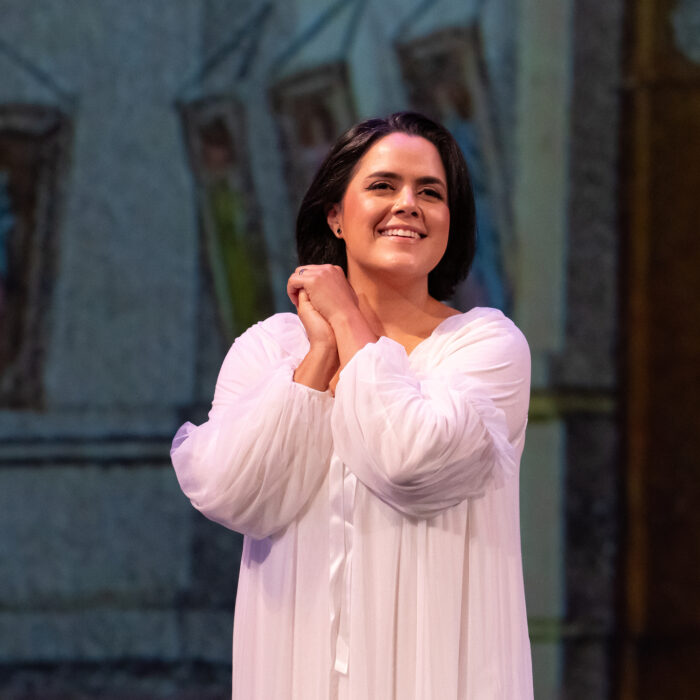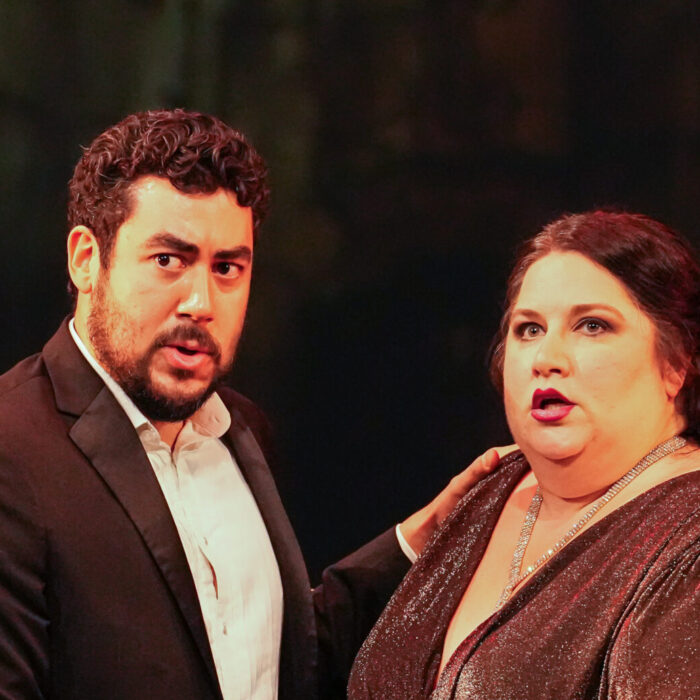
The Top 7 Moments From the Metropolitan Opera’s At-Home Gala (And One Major Misstep)
By David SalazarThe Metropolitan Opera’s At-Home Gala was one of the most hotly anticipated performances of the first half of 2020; one might argue that given its sheer star power, the showcase, which was announced just two weeks ago, was more anticipated than any performance the Met had lined up as part of its regular season.
While the Met initially reneged on this being a fundraiser, especially in its initial announcement, it did eventually become a case of, to quote the Bard, “The Lady doth protest too much, methinks.” Eventually the company owned it and kicked off the gala with its “The Voice Must Be Heard Campaign,” with major artists repeating the phrase quite a few times before kicking off a strong intro video that announced the cast.
For those that might have been skeptical about the gala’s overall impact and execution, this opening montage felt a bit in your face and might have given pause. Fortunately, the remainder of the gala, with the expected lulls and internet issues here and there, proved a solid artistic endeavor.
All the major artists delivered musically and Music Director Yannick Nézet-Séguin, with some insight into process and even a very poignant emotional moment, was a very fitting and entertaining host, complementing the necessary, though often awkward presence of General Manager Peter Gelb (to be fair, the lag likely played a part in some instances).
So rather than a review of the gala, which is rather unfair given context, here is a rundown of arguably the most memorable moments of this entire gala (in no particular order).
Renée Fleming Prays For Everyone
Leading up to the great diva’s emergence in the gala, the audience members had heard some fantastic performances from the likes of Peter Mattei, Roberto Alagna, Aleksandra Kurzak, Michael Fabiano, and Anita Rachvelishvili. But one might argue that the gala really kicked into another gear when Fleming was brought on, reflecting on the challenges of the situation and explaining why of all pieces, she wanted to perform “Ave Maria” from Verdi’s “Otello.”
It was not only a riveting musical moment, but a stirring artistic choice that almost invited the audience to join in a deeper human connection.
Viola Section & Joyce DiDonato Pay Tribute to Vincent Lionti
Earlier this month, violist Vincent Lionti succumbed to the Coronavirus. In his honor, the Met Opera decided to dedicate one piece from the gala to him and did so in a rather poignant manner. The violist section and mezzo-soprano Joyce DiDonato joined forces to perform “Ombra Mai Fu” from Handel’s “Serse.”
After the performance, Met Opera music director Yannick Nézet-Séguin seemed overcome by the emotion in what was a fitting off-the-cuff coda to an emotional moment.
Erin Morley Steals the Show
Throughout the performance, most of the singers performed with a pianist while others appeared with audio tracks. But Erin Morley did neither – she accompanied herself while she sang a section from Donizetti’s “La FIlle du Régiment” in what was the scene-stealing performance of the gala. She capped it all with a tremendous high note. Michael Volle, who followed, express his admiration and surprise.
That she came so early in the gala and remained in the mind long after goes to show how impactful her number proved.
The Orchestra & Chorus Comes Together
Seeing all the members of the orchestra spread across the screen in their own individual spaces was both emblematic of the times in their most tragic but also uplifting dimension. COVID-19 may have forced us all into our own secluded spaces, but music and technology has the power to bring us all together. “Cavalleria Rusticana” and “Lohengrin,” was equally exquisite, but there’s no doubt that the biggest moment of the night was the combination of the Chorus and Orchestra for “Va Pensiero.” The videos may have been pre-recorded (doing it live would have been a logistical nightmare), but their impact was as potent as ever.
A major shout out to the editing team on these videos which showed tremendous delicacy not only toward the performers, but the music; the opening of “Nabucco” was expertly crafted with edits on individual musicians until the big orchestral tutti allowed you to see the full view and effect of the orchestra (as a side note, perhaps we could get this kind of visual flair and elegance with the HDs in future seasons?).
Günther Groissböck’s Set Design (And Low Note)
The Met Opera had a rather awkward moment when they cut to Günther Groissböck early due to some connection issues with Nicole Car and Étienne Dupuis. The bass-baritone was put on the spot awkwardly with Gelb fumbling the transition. But Groissböck managed elegantly, took the baton and performed and accompanied himself at the piano.
And while his singing was fantastic, capped with a fantastic lownote, it was impossible not to focus on what was a well-organized “set” for opera lovers. Posters from La Scala hung to his left and a small model of the Metropolitan Opera sat on top of the piano. When he finalized his performance, Gelb, in one of his brighter moments, engaged Groissböck in conversation about his set dressing, which the bass-baritone obliged. It was a very candid and refreshing save after what had been an awkward opening interaction between the two.
The Definition of Refinement
Is there an artist more refined than soprano Lisette Oropesa? This was undeniably demonstrated in her performance of an aria from “Robert le Diable,” but in the overall production quality of everything around her. From having her accompaniment on a television screen behind her viewable to the audience, to the high quality of the image, to the chair in the background adding depth to the image and covering what would have been a distracting patch of wooden floor, Oropesa’s performance was exquisite to behold.
Duets Abound
Arguably the most engaging moments of the gala were when several of the opera couples joined forces for performances, some often with other musicians; it added a respite from a solo aria marathon and gave the performance some degree of dynamism. But the most notable among these were Roberto Alagna and Aleksandra Kurzak’s antics in a duet from “L’Elisir d’Amore,” Étienne Dupuis and Nicole Car in “Thaïs” with the former at the piano,” and Diana Damrau and Nicolas Testé in “La ci darem la mano” from “Don Giovanni.”
Damrau and Testé, in particular, were rather engaging and homely in their approach, introducing audience members to their kitchen and then even letting their children make a cameo appearance.
One Misstep***
The general good feeling of the gala was slightly undercut by the elephant (missing) in the room – soprano Anna Netrebko. The soprano is one of opera’s biggest stars and arguably one of the major selling points of the gala for fans the world over. Ultimately she did not appear live (she appeared in wonderful pre-recorded performance of a Romance by Rachmaninoff) but the utter disappointment of the situation was increased when Gelb launched lengthy and overwrought platitudes that culminated in claiming her as the Met’s “reigning diva.” This came off as disrespectful to the other singers, all of them at that level, who provided “generous support (per the gala’s credits)” and time to perform from their homes. In many ways it seemed more a foible by Gelb more so than Netrebko or her husband tenor Yusif Eyvazov (who also appeared via pre-recorded performance), whose appearance or lack thereof, was made a bigger deal than it probably needed to be.
What were your favorite moments from the Met Opera’s At-Home Gala?


